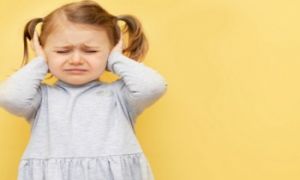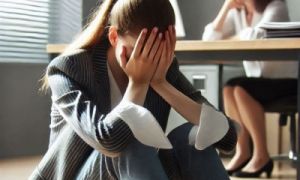The following lists the sub outcomes, examples of evidence that children can achieve each sub outcome and how educators can promote and help children to achieve MTOP Learning Outcome 3: Children Have A Strong Sense Of Wellbeing V2.0.
A strong sense of well-being provides children with confidence and optimism which maximises their potential. It encourages the development of children’s innate exploratory drive, a sense of agency and a desire to interact with responsive others.
Learning about healthy lifestyles, including nutrition, personal hygiene, physical fitness, relaxation, emotions and social relationships is integral to well-being and self-confidence and a core feature of the learning that occurs in school-age care settings.
Learning Outcome 3 - Children And Young People Have A Strong Sense Of Wellbeing
Children and young people become strong in their social, emotional and mental wellbeing
This is evident when children and young people, for example:
- demonstrate trust and confidence
- share humour, happiness and satisfaction
- celebrate their own efforts and achievements and those of others
- increasingly cooperate and work collaboratively with others
- enjoy moments of solitude
- make choices, accept challenges, take considered risks, manage change and cope with frustrations
- show self-regulation and manage their emotions in ways that reflect the feelings and needs of others
- use moral reasoning to solve problems
- assert their capabilities and independence while demonstrating increasing awareness of the needs and rights of others
- recognise the contributions they make to shared projects and experiences and anticipate realistic consequences
- are able to make same-age and cross-age friendships
- are able to engage in relaxation and downtime, as well as more active forms of play and leisure
- recognise and have opportunities to access positive Aboriginal and Torres Strait Islander role models
- Share humour, happiness and satisfaction with others (verbally and non-verbally)
- use positive self-talk when encountering difficulties or setbacks
- identify and seek out trusted people to communicate what upsets them, makes them uncomfortable or sad
- talk about negative emotions or potentially unsafe behaviours.
Educators promote this learning for all children and young people when they, for example: show care, understanding and respect for all children and young people
- listen and respond empathically when children and young people communicate their distress, fears or frustrations
- collaborate with children and young people to plan and document their achievements and share their successes with their families
- challenge and support children and young people to engage and persevere
- build upon and extend children's and young people’s ideas
- maintain high expectations of each child’s capabilities
- affirm children and young people’s decision-making and efforts
- welcome children and young people and families, sharing aspects of their culture and spiritual lives
- discuss emotions, responses to events, emotional regulation and self-control
- collaborate with children and young people to negotiate their rights in relation to the rights of others
- provide time and space for children and young people to challenge and practice physical prowess
- provide children and young people with a range of challenging and motivating play and leisure experiences
- adjust play and leisure offerings to reflect children and young people’s interests and curiosities as they respond to changes in time, weather and other contextual factors
- support families’ diverse parenting approaches
- use strategies that can help to bring balance and safety to the experience of children who have been impacted by trauma or disrupted attachment, and enable them to move from survival to learning
- set high expectations for Aboriginal and Torres Strait Islander children and young people and challenge them to do their best work
- create opportunities to have more Aboriginal and Torres Strait Islander educators visible in the setting
- provide culturally safe spaces that are welcoming for Aboriginal and Torres Strait Islander children and young people and their families
- use trauma-aware approaches
- investigate how physical movement, exercise and healthy lifestyles assist children and young people’s mental wellbeing
- discuss unsafe situations that would need to be reported to educators and other adults, including signs of children and young people at risk
- promote body safety awareness among children and young people
- use appropriate language and strategies to empower children with a basic understanding of the stress response and how they can learn to calm themselves when they notice they are becoming dysregulated.
Children and young people become strong in their physical learning and wellbeing
This is evident when children and young people, for example:
- combine gross and fine motor movement and balance to achieve complex patterns of activity including dance, creative movement, drama and sports
- manipulate equipment and management tools with increasing competence and skill
- regulate their emotions by concentrating, focusing and calming
- demonstrate correct fundamental movement skills when running, hopping, jumping, catching kicking or balancing
- move around the environment safely demonstrating spatial awareness
- build core strength
- develop hand/eye and hand/foot coordination
- join in dance and drama, and move their body in creative ways
- show an awareness of their own feelings and those of others
- display emotions in acceptable ways.
Educators promote this learning for all children and young people when they, for example:
- create physical environments that test and challenge but are inclusive of children and young people’s physical capabilities
- assist children and young people with opportunities to be physical and use both gross and fine motor muscles
- develop shared notions of ‘risky’ play with children and young people and other educators
- use musical instruments, bean bags, balls, bats, and hoops to develop hand/eye coordination
- provide loose parts of various sizes for individual and collaborative play
- teach children protective behaviours such as telling others to stop doing something that makes them feel unhappy or unsafe
- encourage children and young people to make responsible choices and protect themselves from harm
- design indoor and outdoor spaces where children can retreat for calming or peaceful self-soothing (passive leisure)
- use the dramatic arts for supporting children and young people’s exploration of feelings and opinions
- draw on diverse families and community experiences and expertise to include familiar games and physical activities in play
- draw on diverse families and community experiences and expertise to include various forms of dance, e.g. Khon, Bharatanatyam, Bollywood, Shaku, Hip-Hop, and Irish dance.
Children and young people are aware of and develop strategies to support their own mental and physical health and personal safety
This is evident when children and young people, for example:
- are happy, healthy, safe and connected to others
- show an increasing awareness of healthy lifestyles and good nutrition
- show enthusiasm for participating in physical play
- negotiate environments to ensure the safety and well-being of themselves and others
- seek out positive experiences
- Aboriginal and Torres Strait Islander children and young people are comfortable sharing their history and culture, songs, language, food, ceremonies and dance
- talk about self and capacities positively
- develop an understanding that feelings change over time (e.g. stress, loss or grief are normal emotions that everyone goes through at some stage)
- hold a positive outlook
- use strategies to calm the body and mind when needed
- learn ways to ask for and provide consent during everyday play
- distinguish safe and unsafe touches
- discuss and understand how their brain works
- learn how to tell a trusted adult about things that upset them, make them uncomfortable or sad
- learn to use strategies that calm and soothe the stress response and physiological dysregulation.
Educators promote this learning for all children and young people when they, for example:
- collaborate to plan energetic physical activities, including dance, drama, movement, sports and games
- draw on family and community experiences and expertise to include familiar games and physical activities
- provide a wide range of resources to develop and consolidate children and young people’s fine and gross motor skills
- encourage healthy eating and an active lifestyle amongst children and young people
- engage children and young people in experiences, conversations and routines that promote safety, healthy lifestyles and nutrition
- provide a range of active and relaxing experiences throughout the day
- adjust transition and routines to take into account children and young people’s capabilities, interests and curiosities
- learn about e-safety for children and young people and embed and model safe and healthy digital practices
- discuss aspects of posture and other health-related age-appropriate digital practices with children and young people
- promote all children and young people’s rights for challenging and energetic play to all stakeholders
- develop their own awareness of Indigenous issues around the world
- create culturally appropriate learning experiences for all children and young people where their culture is reflected in the setting
- provide spaces and strategies such as relaxation techniques and self-calming for children and young people to manage strong emotions
- communicate to children and young people that it is ok to say no to touch
- listen carefully and take seriously when children and young people talk about things that bother them
- support children to understand how the brain works
- support children who are feeling anxious to approach indoor and outdoor experiences and routines
- develop their understanding and knowledge of personal safety including appropriate strategies to support children, young people and families' awareness of boundaries
- identify the role of risk factors and protective factors on children and young people’s development.
Further Reading
MTOP Outcome 1 - Children And Young People Have A Strong Sense Of Identity V2.0 - The following lists the sub-outcomes, examples of evidence of how children can achieve each sub-outcome and how educators can promote and help children to achieve MTOP Learning Outcome 1: Children And Young People Have A Strong Sense Of Identity.
MTOP Outcome 2: Children And Young People Are Connected With And Contribute To Their World V2.0 - The following lists the sub-outcomes, examples of evidence of how children can achieve each sub-outcome and how educators can promote and help children to MTOP Outcome 2: Children And Young People Are Connected With And Contribute To Their World V2.0.
Reference:
My Time Our Place, Framework For Australia, ACECQA




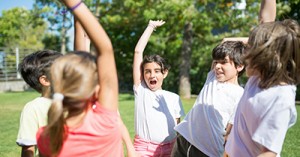
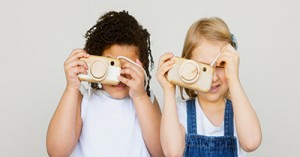
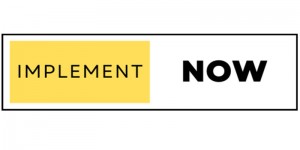
 Here is the list of the EYLF Learning Outcomes that you can use as a guide or reference for your documentation and planning. The EYLF
Here is the list of the EYLF Learning Outcomes that you can use as a guide or reference for your documentation and planning. The EYLF The EYLF is a guide which consists of Principles, Practices and 5 main Learning Outcomes along with each of their sub outcomes, based on identity,
The EYLF is a guide which consists of Principles, Practices and 5 main Learning Outcomes along with each of their sub outcomes, based on identity, This is a guide on How to Write a Learning Story. It provides information on What Is A Learning Story, Writing A Learning Story, Sample
This is a guide on How to Write a Learning Story. It provides information on What Is A Learning Story, Writing A Learning Story, Sample One of the most important types of documentation methods that educators needs to be familiar with are “observations”. Observations are crucial for all early childhood
One of the most important types of documentation methods that educators needs to be familiar with are “observations”. Observations are crucial for all early childhood To support children achieve learning outcomes from the EYLF Framework, the following list gives educators examples of how to promote children's learning in each individual
To support children achieve learning outcomes from the EYLF Framework, the following list gives educators examples of how to promote children's learning in each individual Reflective practice is learning from everyday situations and issues and concerns that arise which form part of our daily routine while working in an early
Reflective practice is learning from everyday situations and issues and concerns that arise which form part of our daily routine while working in an early Within Australia, Programming and Planning is reflected and supported by the Early Years Learning Framework. Educators within early childhood settings, use the EYLF to guide
Within Australia, Programming and Planning is reflected and supported by the Early Years Learning Framework. Educators within early childhood settings, use the EYLF to guide When observing children, it's important that we use a range of different observation methods from running records, learning stories to photographs and work samples. Using
When observing children, it's important that we use a range of different observation methods from running records, learning stories to photographs and work samples. Using This is a guide for educators on what to observe under each sub learning outcome from the EYLF Framework, when a child is engaged in
This is a guide for educators on what to observe under each sub learning outcome from the EYLF Framework, when a child is engaged in The Early Years Learning Framework describes the curriculum as “all the interactions, experiences, activities, routines and events, planned and unplanned, that occur in an environment
The Early Years Learning Framework describes the curriculum as “all the interactions, experiences, activities, routines and events, planned and unplanned, that occur in an environment
